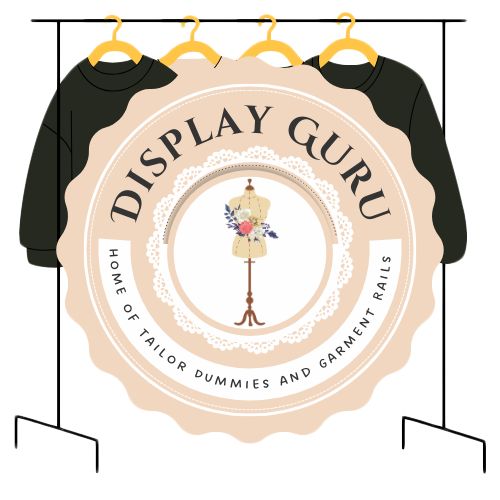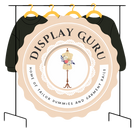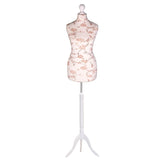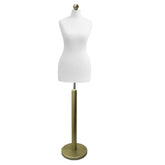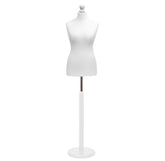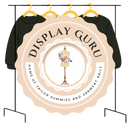Finding the Best Sewing Tables with Storage
Picture this: a sewing space where every spool of thread, every pair of scissors, and every fabric scrap has its own home. Your workflow is smooth, and your creativity can truly flourish without the constant hunt for a missing tool. This is the magic of a good sewing table with storage—it's the heart of an organised and efficient craft room.
Transform Your Crafting with the Right Sewing Table

For anyone who sews, a proper sewing table is far more than just a piece of furniture; it’s your command centre. It’s what separates a frustrating search for a lost bobbin from a seamless, enjoyable creative session. By building storage directly into your main workspace, you craft an environment where inspiration, not clutter, takes over.
This move towards purpose-built crafting furniture isn't just a niche trend. The UK sewing machine market is projected to grow at a steady 2.6% compound annual rate through 2030. As more of us invest in better machines, the need for furniture that can properly support them—both ergonomically and functionally—becomes undeniable. You can read more about this growing market on grandviewresearch.com.
What Makes a Sewing Table a Game-Changer?
You might be making do with the dining room table, but a purpose-built sewing table offers distinct advantages designed for the specific needs of a sewer or quilter.
Here’s what really sets them apart:
- Vibration Reduction: A solid, well-made sewing table absorbs the vibrations from your machine. This means less bouncing and shaking, which translates to straighter, more precise stitches and a lot less aggravation.
- Ergonomic Height: These tables are designed to be at the right height for sewing, helping to prevent the back, neck, and shoulder strain that can come from hunching over a too-low or too-high surface for hours.
- Integrated Organisation: With built-in drawers, shelves, and cubbies, all your essential tools—from thread collections to rotary cutters—are kept tidy and always within easy reach.
A great sewing station doesn’t just store your tools; it organises your workflow. It anticipates your next move, ensuring that every piece of equipment is exactly where you expect it to be, freeing you to focus purely on your craft.
Ultimately, investing in the right table is about laying a solid foundation for a more productive and enjoyable hobby. It's a cornerstone of any truly functional creative space. For more ideas on putting together your dream workspace, take a look at our complete guide on creating the perfect sewing room setup.
What Makes a Great Sewing Table? Let's Break It Down
When you’re looking for the right sewing table, it’s easy to get distracted by looks alone. But the real magic lies in the functional details that actually support your sewing. A great table isn't just a piece of furniture; it's a workspace designed to tackle the unique challenges that come with stitching. Think of it as a creative partner. Understanding its core features is the first step to finding a table that works as hard as you do.
The material of your table is its foundation. Solid wood tables, like those made from oak or maple, are fantastic because their weight naturally absorbs machine vibrations. This means smoother, more consistent stitches. On the other hand, don't dismiss high-quality laminates or MDF (medium-density fibreboard). They offer a durable, scratch-resistant surface that’s much kinder to your wallet and still provides a perfectly steady base for most sewing machines.
To help you weigh up the options, this table breaks down the most common materials.
Comparing Common Sewing Table Materials
This table compares the durability, cost, and best uses for different materials used in sewing tables to help you make an informed decision.
| Material Type | Key Advantages | Potential Drawbacks | Best Suited For |
|---|---|---|---|
| Solid Wood (Oak, Maple) | Extremely sturdy and stable; naturally dampens vibrations. A long-term investment that can last a lifetime. | Can be quite expensive and is very heavy, making it difficult to move. | Serious hobbyists or professionals who want a permanent, high-performance workstation. |
| MDF/Laminate | Budget-friendly, lightweight, and resistant to scratches and spills. Available in a huge range of finishes. | Not as durable as solid wood; can be prone to water damage if the surface is compromised. | Beginners, casual sewers, or anyone needing a flexible, affordable, and easy-to-clean setup. |
| Metal Frame | Often used for portable or industrial-style tables. Very strong and durable. | Can feel less "homely" and might vibrate more than wood unless paired with a quality top. | Crafters who need a minimalist, robust, or easily movable table for different tasks. |
Ultimately, the best material depends on your budget, your space, and how intensely you plan to use the table.
The Features You Won't Want to Live Without
A few key features can transform a simple table into a proper sewing station you’ll love using. First up is adjustable height. This is non-negotiable for comfort. It lets you position the table perfectly to avoid hunching over, which makes a world of difference for your back and shoulders during those longer sewing sessions.
Another absolute game-changer is the machine lift. This is a platform your machine sits on that can be lowered until it’s perfectly flush with the tabletop. This creates one large, seamless surface that's a dream for quilting or handling big projects. Fabric glides across without snagging or pulling, which is a massive help. If you want to dive deeper, our guide comparing cutting and sewing tables has some great insights.
A well-designed sewing table anticipates your needs. Features like a machine lift or ample, organised storage aren't just conveniences; they are functional enhancements that remove barriers between you and your creativity, allowing for a more fluid and enjoyable workflow.
Smart Storage for Your Sewing Style
"Storage" can mean anything, but in the sewing world, the details are everything. The best sewing tables with storage have compartments specifically designed for the tools of the trade.
- Shallow Drawers: These are your best friend for organising tiny notions like bobbins, needles, and seam rippers. Pop in a few dividers, and you'll never have to rummage around again.
- Deep Drawers: Perfect for stashing away bigger items. Think bolts of fabric, patterns, or half-finished projects that you want to keep safe from dust.
- Open Shelving or Cubbies: When you need to grab something fast, these are brilliant. They’re ideal for thread racks or baskets filled with your go-to fabric scraps.
- Integrated Thread Racks: Some tables even come with built-in spool holders. This keeps all your colours visible and right where you need them, ready to go.
This image gives a handy visual comparison of different storage types to help you figure out what might work best for you.

As you can see, there’s often a trade-off. While drawers offer lots of protected space, open cubbies give you the quickest access. It really comes down to balancing security with convenience. This demand for purpose-built furniture is growing, too. The European industrial sewing market was valued at $670.86 million in 2024 and is expected to expand, showing just how important efficient workspaces are for sewers at every level.
Finding Your Perfect Sewing Table Style

Choosing the right sewing table with storage is a bit like finding the perfect dance partner for your creative projects—it needs to support you and move with you. The market is full of different styles, each built for a particular type of sewer, a specific space, and a unique way of working. Getting to know these main designs is the first step toward finding a table that feels tailor-made.
For a lot of us, space is the biggest hurdle. If you're sewing in a small flat or a room that doubles as a home office, a compact, foldable table is an absolute game-changer. These clever pieces often look like nothing more than a simple side table or a small cabinet. But with a quick flip or fold, they transform into a dedicated sewing station with a surprising amount of work surface and hidden storage.
The Compact and Foldable Option
Picture a neat little cabinet sitting quietly against the wall. When you're ready to sew, you just swing the doors open, lift a supportive leaf, and voilà—you have a proper sewing area. These tables really are the masters of disguise.
- Best for: Small flats, multi-purpose guest rooms, or any corner that needs to work hard for its space.
- Key Feature: They almost always have drop-leaf extensions that give you a bigger workspace when you need it and tuck away neatly when you don't.
- Storage Style: You'll typically find a few drawers or shelves inside, perfect for stashing your essential threads and notions without cluttering up your living area.
This style proves you don't need a huge, dedicated craft room to create an organised and enjoyable sewing space.
The Expansive Sewing Cabinet
On the other end of the scale, you have the expansive sewing cabinet. This is the command centre for the serious quilter or dressmaker who has a room dedicated to their craft. Think of it less as a simple table and more as a complete, all-in-one workstation designed for big ambitions.
A large sewing cabinet is about more than just having extra room. It’s about creating an organised ecosystem where every tool has its place, and the huge worktop can handle the weight of a king-sized quilt or yards of heavy denim.
With deep drawers that can hold bolts of fabric, special racks for organising your thread collection, and often a built-in lift for your machine, these cabinets can turn any spare room into a professional-level studio. They're a real investment, but for anyone who sews regularly, the efficiency they offer is second to none. If you need a setup for both sewing and cutting, it's worth checking out our guide to the best sewing and cutting table choices.
The Flexible Modular System
But what if your needs are likely to change? That's where modular systems shine. These setups are made of separate pieces—a main table, standalone drawer units, and shelving—that you can arrange and add to as your hobby evolves. You might start with just a basic table and then bring in more storage modules down the line, building a completely custom workspace that grows with you.
Here in the UK, dedicated crafters continue to seek out this kind of specialist furniture. While the sewing furniture market saw a 10.5% downturn to around $47 million in early 2024 after a post-pandemic boom, committed hobbyists are still happy to invest in pieces that help them stay organised. It just goes to show how important a well-designed space is for keeping those creative juices flowing.
How to Measure Your Space for a Perfect Fit
It’s easy to get carried away by the excitement of choosing a new sewing table, but one of the most common mistakes is getting the measurements wrong. A table that’s too big can overwhelm a room, while one that's too small simply won't do the job. To get it right the first time, you need to think like a tailor fitting a bespoke suit—precision is absolutely key.
Start by measuring the total area where you plan to put the table. Grab a tape measure and get the exact width and depth of the floor space you have available. But don't stop there. The next step is the one most people forget: accounting for operational space. This is the invisible bubble of room you need to actually use the table comfortably.
Accounting for Working Room
Your new sewing station won't exist in isolation. You’ll need room to pull out your chair, open drawers, and simply move around. It's not just about whether the piece of furniture fits in the gap; it's about whether your entire creative process fits in the room.
To make sure you'll have a comfortable setup, keep these clearances in mind:
- Chair Space: You'll want to leave at least 60 cm (around 24 inches) of clear space behind the table for your chair. This gives you enough room to get in and out without having to squeeze past anything.
- Drawer and Door Clearance: If the table has storage, pull out a drawer or swing a cabinet door all the way open. Measure how far it extends and check that it won't hit a wall, radiator, or another piece of furniture.
- Room Traffic: Take a step back and visualise the table in place. Will it block a major walkway or stop a door from opening completely? A well-placed table should feel like a natural part of the room, not a hurdle you have to navigate.
Think of it this way: The dimensions listed online are just the starting point. The real footprint of your sewing station includes the space you need to pull out your chair, open every single drawer, and walk around it without turning sideways.
Measuring Your Sewing Machine
Once you're confident the table will fit your space, the next step is to make sure it fits your most important piece of equipment—your sewing machine. This is particularly crucial if you're looking at a table with an adjustable lift platform designed to hold the machine.
You only need two quick measurements:
- Footprint: Measure the width and depth of the base of your machine. This tells you exactly how much surface area it will occupy.
- Height: Measure from the bottom of the machine to its highest point. This is essential for cabinet-style tables where the machine is stored away inside.
Jotting down these numbers before you start shopping will ensure you find a perfect match. It means your machine will sit securely on the tabletop or slot perfectly into its lift without any nasty surprises. A few minutes of prep work now can save you a world of frustration later. This kind of careful measurement is also vital for larger setups, a topic we explore further in our guide to cutting tables for sewing.
Organising Your Sewing Station for Peak Efficiency
So, your new sewing table has arrived. The real fun starts now. Unpacking it is one thing, but transforming it into a creative hub that actually works for you? That’s where the magic is. A well-organised table isn’t just about looking tidy; it’s about making your workflow seamless so you can lose yourself in your projects, not in a hunt for your favourite scissors.
I like to think of a sewing table as a pilot's cockpit. Everything is within arm's reach, placed logically so there's no fumbling around in a critical moment. Your sewing station should feel just like that. By setting up 'sewing zones,' you can turn those built-in drawers and shelves into an intuitive system where everything has its place.
Creating Your Sewing Zones
The idea behind sewing zones is simple: keep things you use together, together. This simple habit stops your drawers from becoming a jumble sale and turns them into an active part of your creative process. It cuts down on the amount of running around you do and, most importantly, keeps your main work surface clear and ready for action.
Here’s a straightforward way to map out your zones:
- The Prime Zone: This is your go-to spot for the things you reach for constantly. Dedicate the top drawer or the most accessible shelf to essentials like your best fabric shears, seam ripper, pins, and marking tools.
- The Cutting Zone: It makes sense to keep all your cutting tools in one place. A specific drawer for rotary cutters, spare blades, pinking shears, and maybe even a small cutting mat will save you a lot of hassle.
- The Thread Zone: There's nothing worse than a tangled mess of thread. A dedicated drawer with spool holders or even small, clear containers will keep your spools and bobbins neat and tidy.
- The Notions Zone: This is for all those bits and bobs you don't need for every single project but are essential when you do. Think zips, buttons, elastic, and specialty presser feet. Lower drawers or side cabinets are perfect for these.
Maximising Your Built-in Storage
Even the most thoughtfully designed sewing tables with storage can be made even better with a few clever tweaks. The table gives you the structure, but a little internal organisation takes it to the next level. It's like adding custom organisers to a new car to make it perfectly fit your lifestyle.
A truly organised sewing station is one where you can find any tool with your eyes closed. It’s not about having more space, but about making the space you have work smarter for you.
You can get there by adding simple, effective organisers into your drawers and shelves. These little extras work with your table's design to stop small items from getting lost in the shuffle. If you're looking for more inspiration, our guide on sewing room storage ideas has a tonne of creative solutions to explore.
Essential Organisers for Your Table
You don't need to spend a fortune to get organised. A few smart additions can make a world of difference in keeping your new table in order.
- Drawer Dividers: Adjustable dividers are a game-changer. You can create custom-sized sections for different types of needles, bobbins, and small tools, stopping them from rolling about every time you open a drawer.
- Clear Bins and Trays: I'm a big fan of small, clear containers because you can see what's inside instantly. They’re brilliant for storing buttons, snaps, and other tiny notions, keeping them contained but visible.
- Magnetic Strips: Here's a great little hack for any sewing space. Stick a magnetic strip to the side of your table or on the inside of a cabinet door. It's the perfect place to temporarily hold pins, needles, and even small metal scissors, keeping them handy but out of the way.
By taking a bit of time to arrange your tools into logical zones and using a few simple organisers, you can turn that new sewing table into a proper command centre. This setup not only saves you precious time but also clears your head, letting your creativity flow without any frustrating interruptions.
Common Questions About Sewing Tables

Choosing a sewing table is a big step, so it’s only natural to have a few questions before you take the plunge. To make sure you feel completely happy with your choice, I've pulled together some of the most common queries people have when searching for the perfect sewing tables with storage.
Getting these answers straight can help you cut through the noise and zero in on the features that will actually improve your sewing life. Think of this as your final checklist before finding that perfect centrepiece for your craft room.
Can I Just Use a Regular Desk for Sewing?
You can, but it’s really not a great long-term plan. A standard desk just isn't built to handle the constant vibrations of a sewing machine, which often leads to annoying wobbling and skipped stitches. Even worse, most desks aren't at the right ergonomic height for sewing, which is a recipe for back and shoulder pain after a few hours.
Dedicated sewing tables are designed specifically to tackle these issues. They offer a rock-solid, vibration-dampening surface and often come with specialist features, like a machine lift, to create a perfectly flat sewing area that a simple desk could never replicate.
What Is the Most Important Feature to Look For?
While every sewer has their own priorities, stability is the one non-negotiable feature. A solid table that doesn't shake when your machine is going full tilt is absolutely essential for clean, professional-looking stitches. Without that stable foundation, sewing can quickly become a frustrating experience.
For many, especially those who quilt or work with large projects, a machine lift comes in a very close second. This mechanism lets you lower your sewing machine so it sits flush with the tabletop, creating one large, seamless surface.
A machine lift is a true game-changer for your comfort and control. It stops fabric from dragging or snagging on the edge of your machine, making it so much easier to guide big quilts or heavy garments with precision.
How Much Should I Budget for a Good Sewing Table?
The cost of sewing tables with storage varies quite a bit, depending on the materials, size, and bells and whistles. Here’s a rough guide to what you can expect to find in the UK:
- Entry-Level Compact Tables: You'll typically find these in the £150 to £300 range. They’re fantastic for smaller spaces or if you’re a more casual hobbyist.
- Mid-Range Tables: If you're after more storage and a machine lift, you should budget somewhere between £400 and £800.
- High-End Cabinets: For premium, large-scale cabinets or modular systems often made from solid wood, prices can easily go to £1,000 or more.
Before you set a firm budget, try making a list of your "must-have" features. This little exercise will help you find a table that gives you the best value for your specific needs, ensuring you invest in a piece of furniture that will support your creativity for years to come.
Ready to create a more organised and efficient workspace? Explore the extensive range of professional-grade tailor dummies, garment rails, and storage solutions at Display Guru. Find the perfect tools to complement your new sewing station and elevate your craft. Visit us at https://www.displayguru.co.uk to browse our collection.
